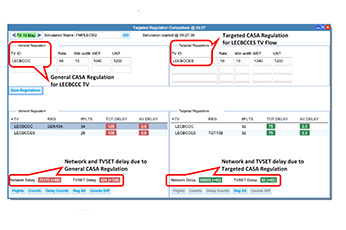
The summer season is upon us, which invariably means more air traffic in Europe. The SESAR Joint Undertaking (SESAR JU) members and partners are demonstrating how local demand and capacity balancing (DCB) solutions can improve predictability and punctuality of air traffic in the overall network.
The SESAR JU large-scale demonstration brought together flow management staff from two Spanish air traffic control centres, as well as engineers and experts from Enaire and Eurocontrol’s Network Manager. Together they sought to demonstrate how the use of local DCB short-term ATFCM measures (STAM) solutions can help to decrease the number of flights affected by measures to balance traffic demand with capacity and any knock-on delays. Specifically, the partners also aimed to demonstrate how these solutions can help to identify on-time imminent complex air traffic situations, declare hotspots where necessary, and select the most appropriate measure to address the situation while minimising any impact on the overall network and airlines’ flight plans.
The demonstration focussed on two scenarios: the electronic coordination between the Network Manager and local flow manager to reduce congestion by imposing short-term ground delays (mandatory cherry picking); and the electronic coordination of computer-assisted-slot-allocation (CASA) for specific traffic flows in the network.
The results from the demonstrations showed that the solutions can have a positive impact on the reduction of regulations imposed on flights and delays in the network, with an average decrease of delay per regulated flight of 9,6%, while a decrease in total delay of 31%.
The research was conducted within the context of Network Collaborative Management (PJ24), a SESAR 2020 very large-scale demonstration co-funded in the framework of Horizon 2020 under grant agreement No 733021
